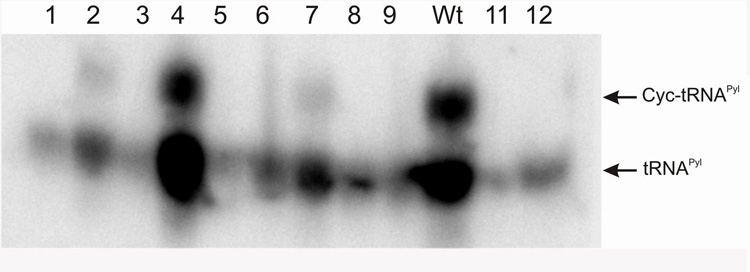Fig. 3.

In vivo aminoacylation of tRNAPyl as visualized by northern hybridization. Total tRNA was extracted from E. coli XAC/A24 strain transformed with plasmids bearing M. barkeri Fusaro pylT and either M. barkeri Fusaro PylRS mutants D2A (Lane 1), K3A (Lane 2), K4A (Lane 3), D7A (Lane 4), S11A (Lane 5), T13A (Lane 6), W16A (Lane 7), D2A/K4A (Lane 8), S11A/T13A (Lane 9), wild type M. barkeri Fusaro PylRS (Wt), wild type D. hafniense PylRS (Lane 11) and M. barkeri Fusaro PylRS truncated from its first 106 amino acids (Lane 12). All transformants were grown in the presence of 10mM Cyc. The resulting tRNA products were loaded onto an acid gel. After transfer to a nitrocellulose membrane, the samples were hybridized with a tRNAPyl specific oligonucleotide probe. The positions of tRNAPyl and Cyc-tRNAPyl are indicated.
